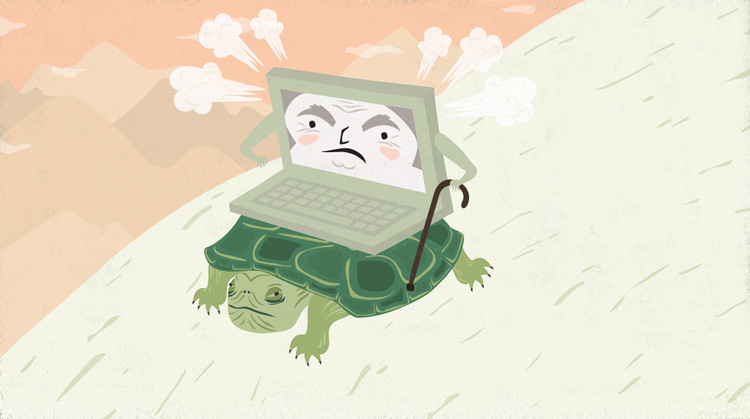Basic Computer Skills -
Tips for Speeding Up Your Computer

Basic Computer Skills
Tips for Speeding Up Your Computer


/en/basic-computer-skills/how-to-keep-an-old-computer-running-smoothly/content/

A slow computer can be pretty frustrating and inconvenient. Whether you're stuck with an old computer or just want to get better performance out of a newer one, here are a few tips and fixes to get it running up to speed.
In some cases, not having much space left on your disk drive can cause your computer to slow down. Here are a few quick ways you can free up some space:
There are also some built-in tools that can help you free up even more space. On a Windows computer, you can use Disk Cleanup to get rid of temporary and unnecessary files, as shown in this Computer Hope article. If you have a Mac with macOS Sierra or later, you can use the About This Mac dialog box to free up space, as shown in this Apple support article.
Defragmenting your hard drive on a regular basis can often help speed up your computer as well. Over time, the data on your hard drive becomes fragmented, making it more difficult for your computer to find. Defragging reorganizes this data and allows your computer to access it more easily.
Another reason your computer might be running slowly is that it doesn't have enough RAM (random access memory). RAM is what allows your computer to have various programs open at the same time. If you don't have enough RAM, your computer will slow down quite a bit when you have too many programs running.
Luckily, it's possible to add more RAM to your computer. To do this, you'll need to figure out what type of RAM your computer uses. After you buy the RAM, you'll have to physically open your computer to install it. If this process sounds too complicated, you may want to consider taking it to a computer repair shop to have someone else do it.
Every device connected to your computer, whether it be a keyboard, printer, or mouse, requires something called a driver to function. Drivers are basically programs that tell your computer how to use these devices. If these drivers are out of date, they can slow down your computer and prevent these devices from functioning properly. If this happens, they need to be updated.
If you're using a Windows computer, your drivers will most likely be updated automatically. However, there may be cases where you need to manually do this. Check out this guide from Lifewire to learn how to update them. If you have a Mac, all of your drivers will update on their own.
If your computer is taking a long time to boot up, there may be too many programs launching during startup. Luckily there's a way to manage these startup processes and control what will and won't launch. For information on how to do this, check out this guide from How-To Geek for Windows computers or this guide from Nektony for Macs.
Before disabling certain apps and programs, be sure to do some research and make sure they're not vital for your computer to run.
Throughout the course of using your computer, it may accidentally acquire malware or viruses. These often damage and slow down your computer. The best way to prevent and deal with them is to use some sort of antivirus software. Most of these can scan for, detect, and in some cases eliminate them. For more information, review our lessons on how to avoid malware and protecting your computer.
/en/basic-computer-skills/how-to-defragment-your-hard-drive/content/